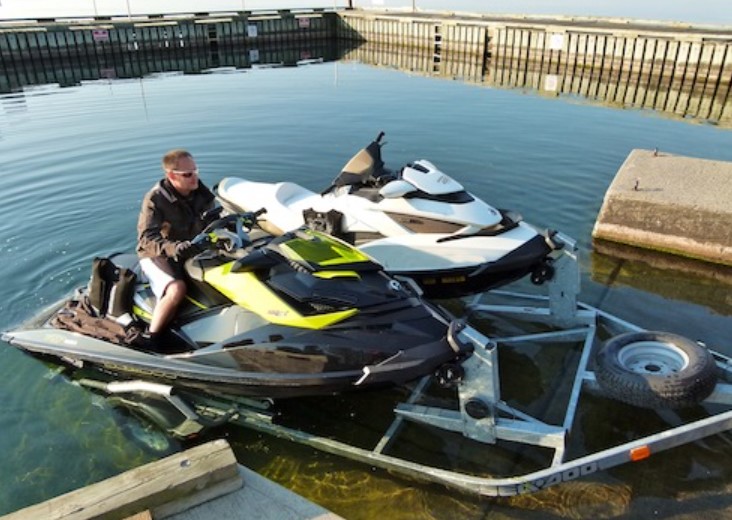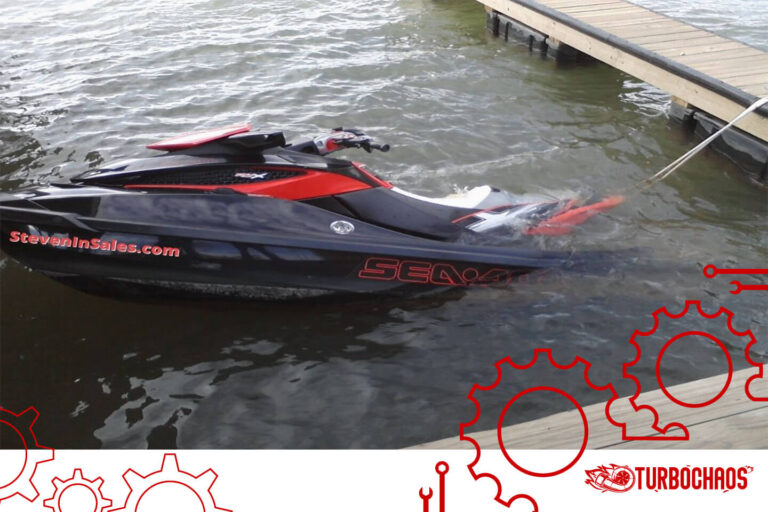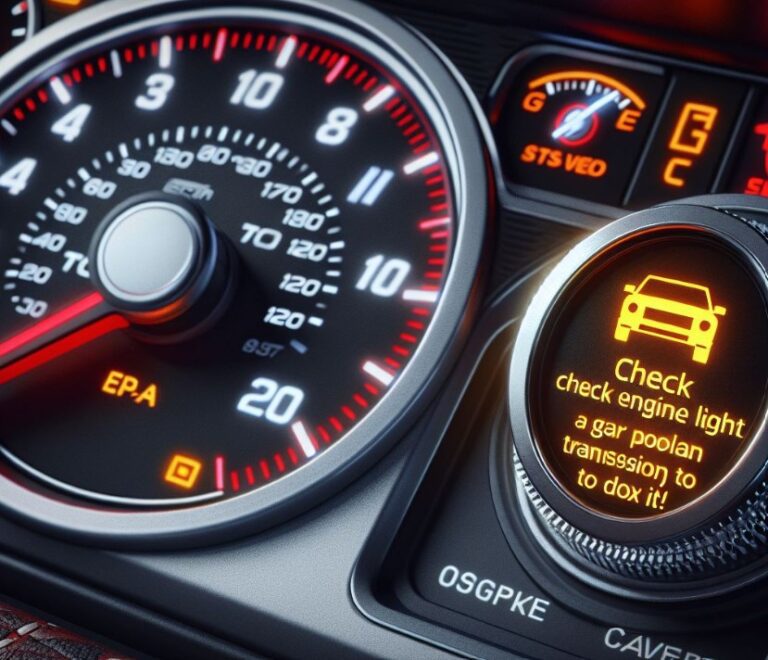How To Get Water Out Of Jet Ski Engine? Step By Step Guide
Jet skiing is an exhilarating water sport that offers an unmatched sense of freedom on the waves. However, How To Get Water Out Of Jet Ski Engine? This is a crucial question for maintaining your jet ski in top condition. Addressing this issue promptly can prevent serious damage to your engine.
Key Takeaways
- Quick Action: Rapid response is vital to minimize engine damage.
- Drain the Water: Use the bilge pump and sponges to remove water.
- Dry the Engine: Thoroughly dry the engine compartment.
- Check for Damage: Inspect for any corrosion or damage.
- Professional Inspection: Consider a professional inspection for a thorough assessment.
How To Get Water Out Of Jet Ski Engine?
Getting water out of a jet ski engine is a crucial process to prevent long-term damage. Here’s a detailed guide on how to effectively remove water:

Step 1: Turn Off the Engine and Assess the Situation
- Immediate Action: As soon as you suspect water has entered the engine, turn off the jet ski. Operating it with water inside can lead to severe damage.
- Assessment: Check for the water level inside the engine compartment. This will help you gauge the severity of the situation.
Step 2: Remove the Jet Ski from Water
- Safety First: If possible, bring the jet ski out of the water onto a stable surface. This makes it easier to work on and prevents additional water from entering.
Step 3: Drain the Water
- Tilting: Gently tilt the jet ski to allow water to drain out. The exact tilting method depends on the jet ski model, so refer to the owner’s manual.
- Bilge Pump: Use a bilge pump if the jet ski is equipped with one. This is an effective way to remove large amounts of water quickly.
Step 4: Remove Spark Plugs (If Applicable)
- Spark Plug Removal: For internal water removal, especially in the case of a flooded engine, remove the spark plugs. This prevents hydro-lock, where water in the cylinders in the engine prevents from turning over.
- Crank the Engine: With the spark plugs removed, gently crank the engine. This action forces water out of the cylinders through the spark plug holes.
Step 5: Manually Remove Remaining Water
- Sponges and Towels: Use absorbent materials like sponges or towels to mop up any residual water inside the engine compartment.
- Attention to Detail: Pay special attention to crevices and hard-to-reach areas where water might accumulate.
Step 6: Dry the Engine Compartment
- Air Drying: Leave the engine compartment open to air dry, ensuring all moisture evaporates.
- Use of Air Blowers: Alternatively, use an air blower to speed up the drying process. Avoid high heat, as it may damage engine components.
Step 7: Check and Lubricate
- Inspection: Once the engine is dry, inspect for any signs of damage or corrosion. Pay attention to electrical connections, as they are particularly susceptible to water damage.
- Lubrication: Apply lubricant to moving parts and electrical connections to prevent rust and ensure smooth operation.
Step 8: Reassemble and Test
- Reassemble: If spark plugs were removed, reinsert them and ensure all components are correctly reassembled.
- Test Start: Start the engine and let it run for a short period to ensure everything is functioning correctly.
Step 9: Post-Cleanup Inspection
- Monitor Performance: Pay attention to the jet ski’s performance in the following days to ensure no lingering issues.
- Professional Inspection: If you’re unsure about any steps or notice abnormal behavior, it’s advisable to get a professional inspection.
Step 10: Prevention
- Regular Checks: Regularly inspect your jet ski for signs of wear and potential water entry points.
- Proper Storage: Store your jet ski properly, especially during off-seasons, to prevent water accumulation.
Understanding Water Intrusion in Jet Ski Engines
What Causes Water to Enter the Engine?
Water can infiltrate a jet ski engine due to various reasons. Common causes include:
- Sealant Failure: Over time, sealants can degrade, allowing water entry.
- Impact Damage: Collisions can create cracks or openings.
- Incorrect Storage: Poor storage practices can lead to water accumulation.
The Impact of Water in the Engine
Water in the engine compartment can lead to:
- Corrosion: Crucial parts may rust or corrode.
- Electrical Issues: Short-circuiting of electrical components.
- Engine Damage: Water in the combustion chamber can cause severe damage.
Drying and Preventing Corrosion

Thorough Drying
Ensure the engine compartment is completely dry. Use air blowers or leave it open to air dry.
Corrosion Prevention
Apply anti-corrosion sprays to protect metal components.
Regular Maintenance for Prevention
Importance of Routine Checks
Regularly inspect your jet ski for any signs of wear and tear. Early detection can prevent water intrusion.
Professional Maintenance
Annual professional maintenance ensures your jet ski remains in optimal condition.
When to Seek Professional Help?
Recognizing the Need for Expert Assistance
If you’re unsure about the damage extent or the drying process, it’s best to consult a professional.
Benefits of Professional Inspection
A professional can:
- Identify Hidden Damage: Detect issues you might miss.
- Provide Expert Repair: Offer reliable and efficient solutions.
Why Is There Water In My Jet Ski Engine?
Water can enter a jet ski engine due to various reasons. Common causes include:

- Sealant Failure: Over time, the sealants used to waterproof the engine can degrade, allowing water to seep in.
- Hull Breaches: Cracks or holes in the hull from impacts or wear can let water into the engine compartment.
- Improper Use: Flipping the jet ski or submerging it improperly can cause water to enter through exhaust or intake systems.
- Worn Gaskets or Seals: These components can wear out over time, losing their ability to keep water out.
How Do You Flush A Jet Ski Engine?
Flushing a jet ski engine is crucial after riding in saltwater or polluted water. Here’s how to do it:
- Connect a Freshwater Source: Attach a garden hose to the jet ski’s flushing port. Do not turn on the water yet.
- Start the Engine: Turn on the engine of the jet ski.
- Open the Water Supply: Turn on the garden hose to start the flow of water.
- Let It Run: Allow the engine to run for a few minutes. This will flush out any salt, sand, or debris.
- Turn Off the Water and Engine: First, turn off the water supply, then shut down the engine.
How Do You Get Water Out Of A 2 Stroke Jet Ski?
Removing water from a 2-stroke jet ski engine involves several steps:

- Drain the Engine: Tilt the jet ski to help drain out as much water as possible.
- Remove Spark Plugs: Carefully remove the spark plugs to allow water to escape from the cylinders.
- Crank the Engine: With the spark plugs out, crank the engine several times. This action forces any remaining water out of the engine.
- Dry the Components: Use a blower or leave the engine compartment open to air dry.
- Reassemble and Lubricate: Once dry, reinsert the spark plugs and apply lubricant to the necessary components.
How Do You Get Water Out Of A Seadoo Spark?
For a Seadoo Spark, follow these steps to remove water:
- Access the Engine Bay: Open the hood to access the engine.
- Use a Bilge Pump: If there’s a significant amount of water, use a bilge pump to remove it.
- Manual Removal: For residual water, use absorbent towels or sponges.
- Dry Out the Compartment: After removing the water, leave the hood open to air dry or use a blower.
- Check for Damage: Once dry, inspect for any signs of corrosion or damage.
Conclusion
Understanding and addressing how to get water out of a jet ski engine is essential for any jet ski enthusiast. Implementing these steps can save your engine from significant damage, ensuring your water adventures continue uninterrupted.
Regular maintenance and prompt action are key. However, don’t hesitate to seek professional help when in doubt. It’s not just about fixing a problem; it’s about safeguarding your investment in fun and adventure.
Top FAQ’s
How important is it to use a bilge pump for water removal?
A bilge pump is very effective for removing large quantities of water quickly and should be considered a crucial tool for anyone owning a jet ski. Manual methods like sponges and towels are more suitable for removing residual water.
Can water damage to a jet ski engine be covered by warranty or insurance?
This depends on your warranty or insurance policy. Some policies may cover water damage, but it’s important to check the specific terms and conditions.
What should I do if I can’t remove all the water from my jet ski engine?
If you can’t remove all the water, or if you’re unsure about the extent of the water intrusion, seek professional help. A professional can thoroughly inspect and repair your jet ski.
Are there any preventive measures to avoid water getting into the jet ski engine?
Yes, regular maintenance, using quality sealants, storing the jet ski properly, and avoiding impacts can help prevent water intrusion.

Welcome to the exhilarating world of Matt Rex, a professional car racer turned renowned vehicle enthusiast. Immerse yourself in his captivating blog as he shares heart-pounding adventures, expert reviews, and valuable insights on cars, trucks, jets, and more. Fuel your passion for speed and discover the beauty of vehicles through Matt’s engaging stories and meticulous expertise. Join the ever-growing community of enthusiasts who find inspiration and expert advice in Matt Rex’s blog—a digital hub where the thrill of speed meets the pursuit of knowledge.







